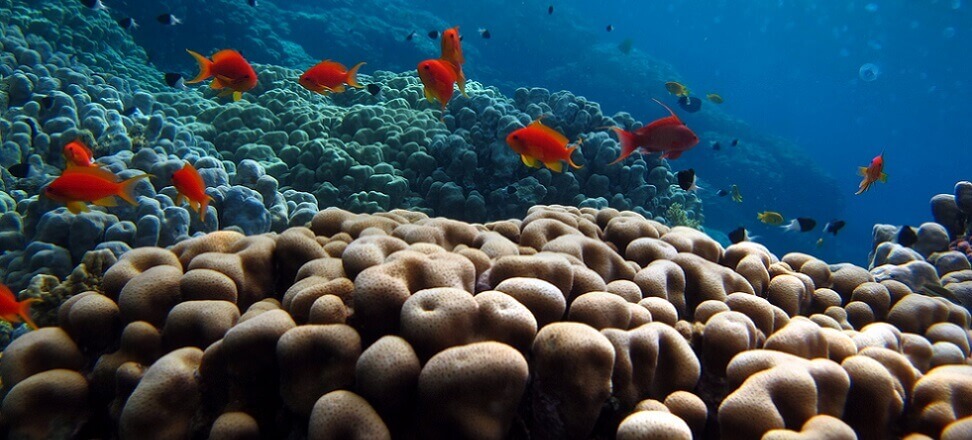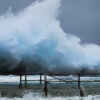Issue 21/2024, News
The largest coral in the world discovered
In the depths of the waters surrounding the Solomon Islands, a massive coral colony that had remained unnoticed for centuries has been discovered. This finding has captivated scientists and environmentalists, opening new opportunities for studying coral reef ecosystems. The impressive size of the colony and its extraordinary resilience to environmental changes prompt reflection on its survival mechanisms and the state of contemporary oceans.
Gigantic size and remarkable longevity
The coral colony, belonging to the species Pavona clavus, known as the leafy coral, measures 34 meters in width and 32 meters in length. This discovery not only astonishes with its scale but also provides researchers with valuable data on coral adaptations to changing environments.
The coral was found at a depth of just 10 meters, suggesting that stable conditions in the region, such as moderate temperatures, low pollution levels, and minimal human impact, allowed it to thrive for centuries. While its exact age cannot be determined to the year, researchers estimate it to be between 300 and 500 years old.
Complex structure of a unique coral
The colossal Pavona clavus colony consists of densely intertwined coral polyps—tiny, individual organisms that together form one large structure. Each polyp is encased in a calcareous skeleton, and the entire colony grows in a complex, branched manner, resembling an underwater leafy landscape.

The coral stands out with its distinctive coloration. Shades of brown dominate, but bright spots of yellow, blue, and red are visible on its surface. This coloration results from the presence of symbiotic algae and varying mineral structures in different parts of the colony. Additionally, the coral’s surface is delicately corrugated, a typical feature of this species, which also increases its biological surface area.
Unlike coral reefs, which consist of networks of multiple coral colonies, this structure is a single, autonomous colony. This means it has developed continuously over hundreds of years, without interruptions or competition for space. This unique growth form indicates favorable environmental conditions that enabled the colony to achieve such extraordinary dimensions. Its remarkable structure supports a variety of marine species, offering them shelter and food.
The path to discovery
The discovery was the result of collaboration between the National Geographic Pristine Seas team, the government of the Solomon Islands, the Ministry of Education and Human Resources Development (MEHRD), the Ocean12 consortium, and marine institutes from Australia, the United States, and local Solomon Islands organizations. The expedition aimed to identify coral reefs requiring protection and assess their condition.
During field research, the team stumbled upon the coral colony, whose size astonished even the most experienced researchers. Using underwater measurements and cartographic technologies, scientists precisely estimated the coral’s dimensions. Divers manually measured the colony using tape measures to determine its diameter and height. In addition, 3D imaging technology was employed to accurately map the coral’s structure and size, ensuring exceptional precision.
By combining these methods, researchers were able not only to measure the coral but also to thoroughly analyze its condition and structure, providing crucial data for further studies on coral reefs.
“Just when we think there’s nothing left to discover on Earth, we find a giant coral made up of nearly a billion tiny polyps, pulsating with life and color,” said Enric Sala, National Geographic Explorer in Residence and founder of Pristine Seas. “This is a significant scientific discovery, akin to finding the tallest tree in the world. But there is cause for concern. Despite its remote location, this coral is not safe from global warming and other human threats.”
The largest coral in the world – protection and future research
Despite the exceptional health of the Pavona clavus colony, scientists warn that climate change poses a serious threat. Ocean acidification, caused by rising atmospheric carbon dioxide levels, negatively affects corals’ ability to build their calcareous skeletons. Coral bleaching, a result of rising water temperatures, further weakens their survival capacity.
The discovery of the Pavona clavus colony provides scientists with a unique opportunity to delve deeper into the biology and ecology of corals. Detailed genetic analyses and studies of adaptive mechanisms are planned, which could provide valuable insights in the fight to save other endangered coral reefs.









